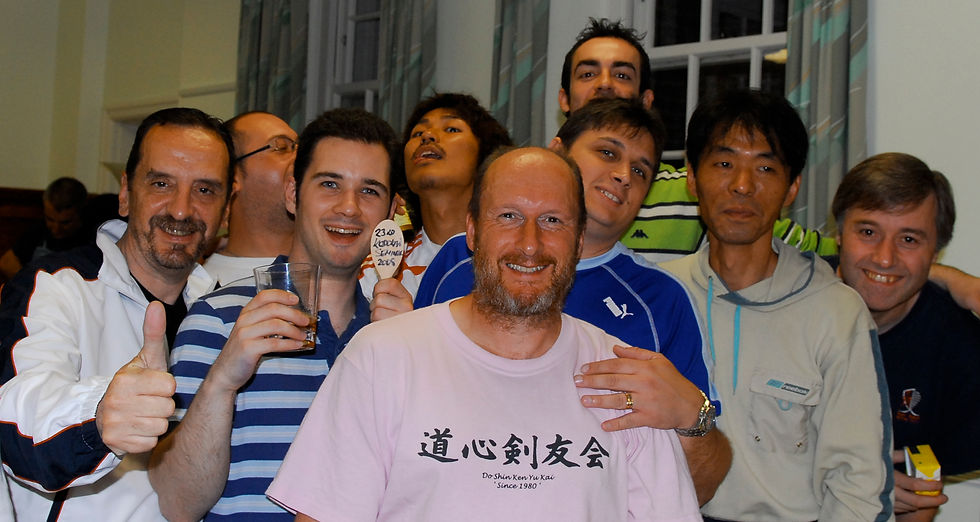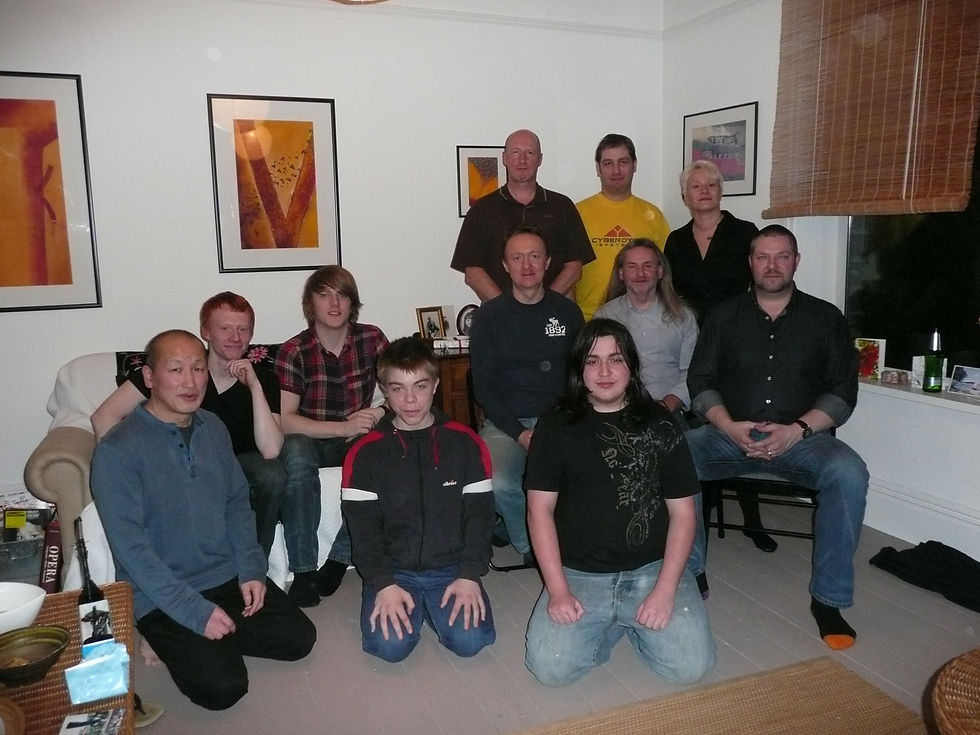

ABOUT THE DOJO NAME...
DO SHIN KEN YU KAI means the friendly association for the development of the heart/mind through the application of the principles of the sword.
We should all try to live up to the ethos of the dojo name.
The term DOJO comes from Buddhism and means "A place to study" and originally referred to the platform the Buddha meditated on
When entering or leaving a DOJO one should perform RITSU REI to the KAMIZA (Bow to the high side and location of the Banner) in order to help to mentally commit yourself to sincere training. It is most important to have appreciation for a place to practice kendo and people to practice with.
We must always strive to maintain the cleanliness and neatness of the DOJO by taking care of our own belongings (e.g., shoes, clothes, DOGU) and helping to prepare the room and sweep clean the floor etc.
1. SHOMEN - Sensei seat/Banner
2. JOSEKI - Yudansha seat
3. SHIMOZA/ITANOMA - Kyusha seat
4. KEIKOJO - Training area
5. GENKAN - Entrance/shoe store
6. KOI-SHITSU - Changing area, Bag storage etc.
Line up with the YUDANSHA sitting at JOSEKI with the SEMPAI sitting nearest the KAMIZA and the rest progressively towards the lower end of the DOJO (SHIMOZA) by grade. KYUSHA sit at SHIMOZA as a continuation of this line ordered by grade, whether they are correctly attired then by age. Visitors/spectators sit at ITANOMA.
At DO SHIN KEN YU KAI it is customary for anyone of GODAN (5th DAN) or above and visiting DOJO LEADERS to be invited to sit at the SHOMEN seat of the dojo (But please wait to be invited).
Mission Statement
All those who train at DO SHIN KEN YU KAI should feel safe and welcome. We must all treat each other respectfully.
We all have a duty of care when in the Dojo not to harm others by our actions or omissions. This includes practicing and teaching with equipment that we know is safe to use and practicing and teaching in ways that will not cause harm to others.
Shi Tei Do Go
This important Zen concept means: the master and student follow the same path. They are not equal but have a great deal in common. In the dojo, the master (SENSEI or SEMPAI) leads the way and the novice (KOHEI) follows. Everyone who trains at DO SHIN KEN YU KAI must remember that less experience does not mean less intelligent or less worthy of respect.
For day to day Dojo announcements etc. check out:
https://www.facebook.com/groups/195436643831754/?ref=bookmarks
or join our whatsap group


Director
Gary O'Donnell Kyoshi Nanadan
Has practiced Kendo, Iaido and Jodo for more than forty years achieving grades in all three.
Leads and supports at several BKA and international events each year acting as a teacher, referee, examiner and organiser at these events
Is a recognised International referee
Particularly enjoys Kata training and also practices kenjutsu: Mizoguchi Ha Itto Ryu Heiho, Niten Ichi Ryu and Shinto Ryu Kenjutsu.
Is a qualified teacher and education manager PGCEM, B.Ed (Design & Technology) and a national (level 4) coach with the BKA.
Started kendo training in 1980 and has been involved on and off with the national squad on several occasions over the years.
Has competed successfully in numerous competitions and events winning menjo, medals and cups of all shapes and sizes.
Now focusses mainly but not exclusively on refereeing and coaching.
Currently the Director of kendo for the British Kendo Association.
.



Benefits to be gained from kendo training...
-
Physical conditioning and maturity of mind
-
Etiquette, courtesy, morality, respect, empathy
-
Concentration, focus, attentiveness, eagerness to learn
-
Agility, dexterity, coordination, grace
-
Endurance, strength, perseverance
-
Care of equipment
-
Promptness, reliability, accountability
-
Orderliness, neatness, pride


It is an imperative for all people who seek to grow through kendo to strive to develop these positive traits. We should consider that KENDO is not a sport or martial art. To label it as either or even both of these simply does not do it justice, although it can be both of these things if that is what you are looking for.
Kendo (The way of the sword) in fact is a means by which one can develop positive traits (Virtues) through the application of the principles of the sword and as such transcends the limitations of both sports and martial arts and enters into the field of personal/spiritual development.
Mental attitude is of paramount importance in all aspects of life. Being positive and constructive is essential if we are to remain healthy and happy. Supporting others is very rewarding and leads to a richer life. In kendo a positive mental attitude manifests itself in Reiho. Dealing with others sincerely in an open manner, seeking to treat others fairly and remaining objective are essential elements of Rei. The way that we interact with others is a measure of how well we have learned the principles of kendo and integrated these into our personality.







THE DOJO LOCATION
The Royal Armouries is based in Leeds and is a key national repository for the crown's collection of arms and armour.
There is an extensive oriental section near the newsroom on the fourth floor with many Japanese weapons and artefacts on display
ADDRESS
The Royal Armouries
Armouries Drive
Leeds
LS10 1LT
Find us in the Newsroom on the fourth floor
TRAINING TIMES
WEDNESDAY EVENINGS From 8.00 To 10.00
OR BY APPOINTMENT
TRAINING FEES
DOJO MEMBERS PAY £10.00 PER MONTH VIA STANDING ORDER
MEMBER'S CHILDREN ARE FREE
ADULT VISITORS PAY £7.00 PER SESSION (JUNIORS WITH ADULTS ARE FREE)
JUNIOR VISITORS PAY £5.00 PER SESSION




